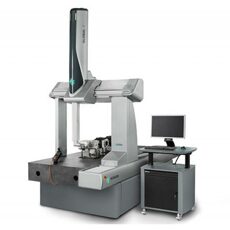Coordinate Measuring Machines
Coordinate measuring machines (CMM) are devices that are used to digitally recreate the geometry of physical objects by measuring discrete points on their surface. Various types of probes are used in CMM, such as mechanical, optical, laser and structured light-based probes. The position of the probe can be controlled by the operator manually or with the help of a computer.
The coordinates of the probe in the three-dimensional Cartesian coordinate system (XYZ) are determined by measuring its displacement relative to the reference position. In addition to moving the probe along the X, Y and Z axes, many CMMs allow you to adjust the angle of the probe to measure areas that would otherwise be inaccessible.
The first two-axis CMMs were developed in the 1950s by Ferranti in Scotland for accurate measurements of components of military products. In the 1960s, the first three-axis models appeared, such as the DEA (Italy). In the early 1970s, computer control was introduced, and in the early 1980s, Browne & Sharpe developed and introduced to the market the first commercial CMM with digital control.
Currently, DEA and Browne & Sharpe are part of the Swedish multinational corporation Hexagon AB, which is a leading manufacturer of CMM and other measuring equipment. CMMs are widely used in various industries, including mechanical engineering, automotive, aerospace, medical manufacturing and others, for accurate measurements and quality control of parts and components.
LLC “Deltapro Automation” will select the optimal machine for you, as well as conduct training and commissioning of equipment.

